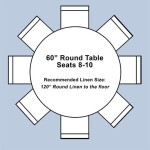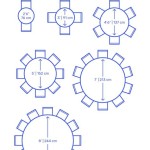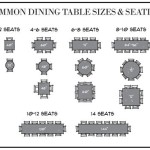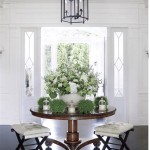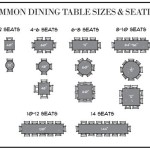What is Ideal Depth and Table of a Diamond?
The assessment of a diamond's cut is pivotal in determining its overall beauty and value. Among the various factors contributing to a diamond’s cut grade, depth and table percentage play a crucial role in influencing how light interacts with the gemstone. These two proportions, when optimally balanced, contribute significantly to the diamond’s brilliance, fire, and scintillation. However, misunderstandings about the “ideal” ranges for depth and table can be detrimental to selecting a truly exceptional diamond. This article aims to elucidate the significance of diamond depth and table, explore the acceptable ranges for these proportions, and understand how they affect a diamond’s light performance.
The depth percentage represents the ratio of a diamond's total height to its average girdle diameter. It's expressed as a percentage: (diamond depth / average girdle diameter) x 100. For example, a diamond with a depth of 4mm and an average girdle diameter of 6mm would have a depth percentage of 66.67%. The table percentage, similarly, represents the ratio of the table facet's width to the average girdle diameter: (table width / average girdle diameter) x 100. The table facet is the large, flat facet on the top of the diamond.
While a diamond grading report, such as from the Gemological Institute of America (GIA), provides a cut grade (Excellent, Very Good, Good, Fair, Poor), relying solely on this overall grade can be misleading. Two diamonds with the same cut grade can exhibit vastly different light performance due to variations in their specific proportions and facet arrangements. Therefore, it is imperative to understand how depth and table, in conjunction with other proportions, contribute to the overall aesthetic appeal of a diamond.
The Influence of Depth on Light Performance
Diamond depth significantly impacts how light enters and exits the gemstone. When light enters a diamond, it is ideally refracted and reflected internally, creating brilliance (white light reflection), fire (dispersion into spectral colors), and scintillation (sparkle). An optimally proportioned diamond allows for maximum internal reflection, ensuring that light is returned to the viewer's eye. However, if the depth is too shallow or too deep, light leakage can occur, resulting in a dull or lackluster appearance.
Diamonds with shallow depths (typically below 58%) often exhibit a "fisheye" effect. Light entering the diamond hits the pavilion facets at such a shallow angle that it escapes through the table facet instead of being reflected back to the viewer. This results in a visible reflection of the girdle within the table, resembling a fisheye. Shallow diamonds may also appear less brilliant due to the reduced amount of internal reflection.
Conversely, diamonds with excessive depth (typically above 63%) can suffer from a "nailhead" effect. Light entering the diamond is refracted at steep angles and may be absorbed within the diamond or escape through the pavilion facets, resulting in a dark center. A "nailhead" appearance refers to a dark area visible directly beneath the table facet, resembling the head of a nail. Deep diamonds may also appear smaller than their carat weight suggests, as more of the diamond's mass is hidden in the depth.
The “ideal” depth percentage is not a fixed number but rather a range. Diamonds falling within the range of approximately 59% to 62.3% generally exhibit excellent light performance, assuming other proportions are also well-balanced. However, it is crucial to emphasize that depth should be considered in conjunction with other factors, such as table percentage, crown angle, and pavilion depth.
The Role of Table Percentage in Light Performance
The table facet is the largest facet on a diamond and acts as the primary window through which light enters and exits. The table percentage influences the amount of light that enters the diamond and how it is distributed throughout the stone. Like depth, an optimally proportioned table contributes to maximum brilliance and fire.
Diamonds with excessively large tables (typically above 60%) may allow too much light to enter and escape from the diamond too quickly. This can result in a reduction of fire and scintillation, as the light is not sufficiently dispersed into spectral colors. Large table facets can also create a flat, lifeless appearance, lacking the lively sparkle associated with well-cut diamonds.
Diamonds with excessively small tables (typically below 54%) may restrict the amount of light entering the diamond, leading to a dimmer appearance. Light entering through the smaller table may also be directed towards the pavilion facets at unfavorable angles, resulting in light leakage and reduced brilliance. Small table facets can also make the diamond appear smaller than its carat weight suggests.
Similar to depth, the “ideal” table percentage is a range rather than a single value. Table percentages within the range of approximately 54% to 57% are generally considered optimal for light performance. However, a slightly larger table, up to around 60%, can still exhibit excellent brilliance if the other proportions, particularly the crown and pavilion angles, are appropriately adjusted. It is the harmony between these proportions that ultimately determines the diamond's overall beauty.
The Interplay of Depth and Table with Other Proportions
While depth and table percentages are important indicators of a diamond's cut quality, they should not be evaluated in isolation. The crown angle, pavilion angle, girdle thickness, and culet size also play significant roles in influencing light performance. The optimal combination of these proportions results in maximum brilliance, fire, and scintillation.
The GIA considers these proportions when assigning a cut grade. However, even within the "Excellent" cut grade, there can be significant variations in light performance. For instance, a diamond with a depth percentage of 61% and a table percentage of 57% may receive an "Excellent" cut grade. Another diamond with a depth percentage of 62% and a table percentage of 59% might also receive an "Excellent" cut grade. However, the subtle differences in these proportions can affect the diamond's overall aesthetic appeal.
Crown and pavilion angles are critical parameters that influence the path of light within the diamond. The crown angle is the angle between the bezel facets and the table plane. The pavilion angle is the angle between the pavilion facets and the girdle plane. These angles work in conjunction with the depth and table to determine how light is refracted and reflected within the diamond. A steeper crown angle and a shallower pavilion angle may compensate for a larger table percentage, while a shallower crown angle and a steeper pavilion angle may compensate for a smaller table percentage.
Girdle thickness, which refers to the thickness of the edge separating the crown and pavilion facets, also impacts a diamond's durability and light performance. An excessively thin girdle can make the diamond vulnerable to chipping, while an excessively thick girdle can add unnecessary weight and detract from its brilliance. The ideal girdle thickness is typically described as "thin to slightly thick."
The culet is the small facet at the bottom of the diamond. Ideally, a diamond should have no culet or a very small one ("pointed" or "none"). A large culet can allow light to escape from the bottom of the diamond, resulting in a loss of brilliance.
Ultimately, the ideal depth and table percentages are not rigid, fixed numbers but rather ranges that work in harmony with other proportions to create a visually stunning diamond. Examining a diamond's proportions in isolation can be misleading. Employing advanced imaging technology, such as ASET (Angular Spectrum Evaluation Tool), can provide valuable insights into how a diamond interacts with light and help determine whether it exhibits optimal brilliance, fire, and scintillation.

The Significance Of Diamond Depth And Table Percentages

Diamond Depth And Table Here S Everything You Need To Know

Ideal Diamond Cuts

Diamond Anatomy Explained

What Are The Ideal Proportions For Round Cut Diamonds Revealed

The Brilliant Cut Diamond Jewelry Secrets

Best Diamond Table Depth Percentages For Round All Shapes

Diamond Depth Percentages In Round Brilliant Cut Diamonds Findmyrock

Everything You Ever Wanted To Know Find The Best Princess Cut Diamond

Understand The Best Diamond Table And Depth
Related Posts


